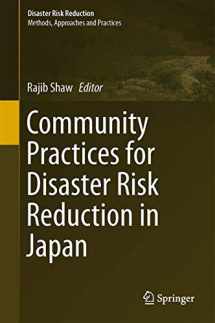
Community Practices for Disaster Risk Reduction in Japan
ISBN-13:
9784431542452
ISBN-10:
4431542450
Edition:
2014
Author:
Rajib Shaw
Publication date:
2014
Publisher:
Springer
Format:
Hardcover
248 pages
FREE US shipping
Book details
ISBN-13:
9784431542452
ISBN-10:
4431542450
Edition:
2014
Author:
Rajib Shaw
Publication date:
2014
Publisher:
Springer
Format:
Hardcover
248 pages
Summary
Community Practices for Disaster Risk Reduction in Japan (ISBN-13: 9784431542452 and ISBN-10: 4431542450), written by authors
Rajib Shaw, was published by Springer in 2014.
With an overall rating of 4.0 stars, it's a notable title among other
books. You can easily purchase or rent Community Practices for Disaster Risk Reduction in Japan (Hardcover) from BooksRun,
along with many other new and used
books
and textbooks.
And, if you're looking to sell your copy, our current buyback offer is $0.3.
Description
This book presents key lessons from community-based risk-reduction practices in Japan, a country that is often hit by disasters and that also has shown strong resilience in coping with those disasters. Japan has a strong governance system for disaster risk reduction. However, the Kobe earthquake of 1995 showed the importance of community involvement in disaster response as well as recovery. With several examples from different parts of Japan, the book elaborates on the importance of community-based risk reduction and the innovations required for sustaining some of the community approaches. The book has 13 chapters and is divided into three parts: (1) Evolution of community-based risk reduction in Japan; (2) Community-based risk-reduction issues; and (3) Case studies. The primary target groups for this book are students and researchers in the fields of environment, disaster risk reduction, and climate change studies. The book provides them with a good idea of the current research trends in the field and furnishes basic knowledge about these vital topics. Another target group comprises practitioners and policy makers, who will be able to apply the knowledge collected here to policy and decision-making.


We would LOVE it if you could help us and other readers by reviewing the book
Book review

Congratulations! We have received your book review.
{user}
{createdAt}
by {truncated_author}


